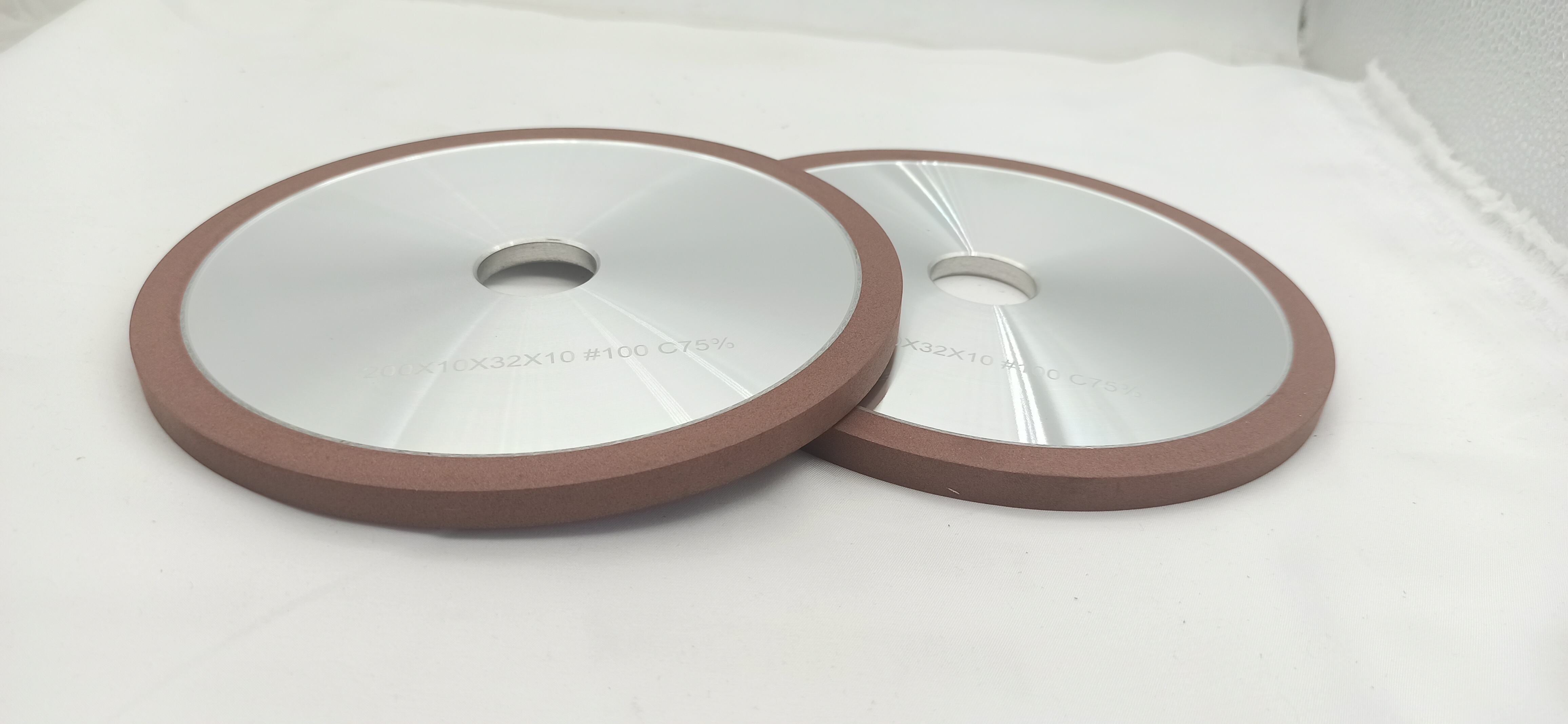
Resin bonded diamond grinding wheels are a cornerstone in precision machining, prized for their versatility, flexibility, and ability to deliver fine surface finishes. At Zhengzhou Ruizuan Diamond Tools, with decades of expertise in abrasive technology, we understand the critical role these wheels play in various industries, from automotive and aerospace to semiconductor manufacturing. In this article, we will delve into the recommended lifespan of resin bonded grinding wheels, the factors influencing their longevity, and practical tips to maximize their performance and service life.

Recommended Lifespan of Resin Bonded Grinding Wheels
The recommended lifespan of a resin bonded grinding wheel can vary significantly depending on multiple factors. On average, under normal operating conditions, a resin bonded diamond or CBN grinding wheel can last between 1000 to 3000 hours of grinding time. However, this is a broad estimate, and the actual lifespan may be shorter or longer based on the following:
1. Application and Workpiece Material
Soft Materials: When grinding soft materials like aluminum or copper, the wheel experiences less wear. In such cases, a resin bonded wheel can last towards the higher end of the lifespan range, potentially exceeding 200 hours.
Hard and Abrasive Materials: Grinding hard materials such as tungsten carbide, hardened steels, or ceramics subjects the wheel to more intense abrasion. For these applications, the lifespan may be closer to 50 - 100 hours. For example, when grinding tungsten carbide cutting tools, the abrasive nature of the material can rapidly dull the wheel's surface, reducing its effective lifespan.
2. Grinding Conditions
Grinding Pressure: Excessive grinding pressure accelerates the wear of the resin bond and abrasive grains. Applying too much pressure can reduce the wheel's lifespan by up to 50%.
Grinding Speed: Higher grinding speeds increase the friction between the wheel and the workpiece, generating more heat. This can cause the resin bond to degrade faster, shortening the wheel's life.
Coolant Usage: Adequate coolant helps to lubricate the grinding interface, reduce heat, and flush away grinding debris. Proper coolant application can extend the wheel's lifespan by 30 - 50%.
3. Wheel Quality and Design
Quality of Abrasive Grains: High - quality diamond or CBN grains with consistent size and shape distribution contribute to a longer - lasting wheel. At Ruizuan, we source only the finest abrasive grains, ensuring superior performance and durability.
Bonding Strength: The strength and quality of the resin bond are crucial. Our proprietary resin formulations provide an optimal balance between holding the abrasive grains firmly and allowing for controlled wear. A well - formulated bond can significantly extend the wheel's lifespan.
Factors Influencing the Lifespan of Resin Bonded Grinding Wheels
1. Workpiece Geometry and Surface Finish Requirements
Complex workpiece geometries or stringent surface finish requirements may necessitate more aggressive grinding, which can increase wheel wear. For example, grinding deep grooves or intricate profiles may require the wheel to remove more material in a shorter time, reducing its lifespan.
2. Machine Rigidity and Vibration
A rigid grinding machine with minimal vibration ensures a stable grinding process. Excessive vibration can cause uneven wear on the wheel, leading to premature failure. Using a high - quality machine and proper machine maintenance are essential for maximizing the wheel's lifespan.
3. Operator Skill and Technique
Skilled operators who understand the grinding process and can optimize parameters such as speed, pressure, and coolant flow can significantly extend the life of the grinding wheel. Improper operating techniques, such as sudden changes in grinding pressure or incorrect dressing, can damage the wheel and reduce its effectiveness.
Tips to Maximize the Lifespan of Resin Bonded Grinding Wheels
1. Proper Wheel Selection
Match the Wheel to the Application: Select a resin bonded grinding wheel with the appropriate abrasive type, grit size, and bond hardness for the specific workpiece material and grinding task. For example, a finer grit size is suitable for achieving a smooth surface finish, while a coarser grit is better for rapid material removal.
2. Optimal Grinding Parameters
Control Grinding Pressure: Apply the recommended grinding pressure as specified by the wheel manufacturer. Use a pressure gauge or machine - controlled settings to maintain a consistent pressure throughout the grinding process.
Set the Right Grinding Speed: Follow the speed recommendations based on the wheel and workpiece material. Avoid exceeding the maximum recommended speed to prevent excessive heat generation and wheel wear.
Use Sufficient Coolant: Ensure an adequate supply of coolant with the correct concentration. Regularly check the coolant level and quality, and replace it as needed. Coolant helps to keep the wheel and workpiece cool, reducing thermal damage and improving the grinding efficiency.
3. Regular Wheel Dressing and Truing
Dress the Wheel Regularly: Dressing removes the worn - out surface of the wheel, exposing fresh abrasive grains and restoring the wheel's cutting efficiency. Follow the manufacturer's guidelines for dressing frequency and use the appropriate dressing tool
Understanding the recommended lifespan of resin bonded grinding wheels and the factors that influence it is essential for optimizing machining processes, reducing costs, and ensuring consistent quality. At Zhengzhou Ruizuan Diamond Tools, we are committed to providing our customers with high - quality resin bonded grinding wheels and the knowledge and support they need to get the most out of their tools. By following the tips outlined in this article, you can maximize the lifespan of your grinding wheels and achieve superior grinding results.
Copyright © Zhengzhou Ruizuan Diamond Tool Co.,Ltd. All Rights Reserved — Privacy Policy